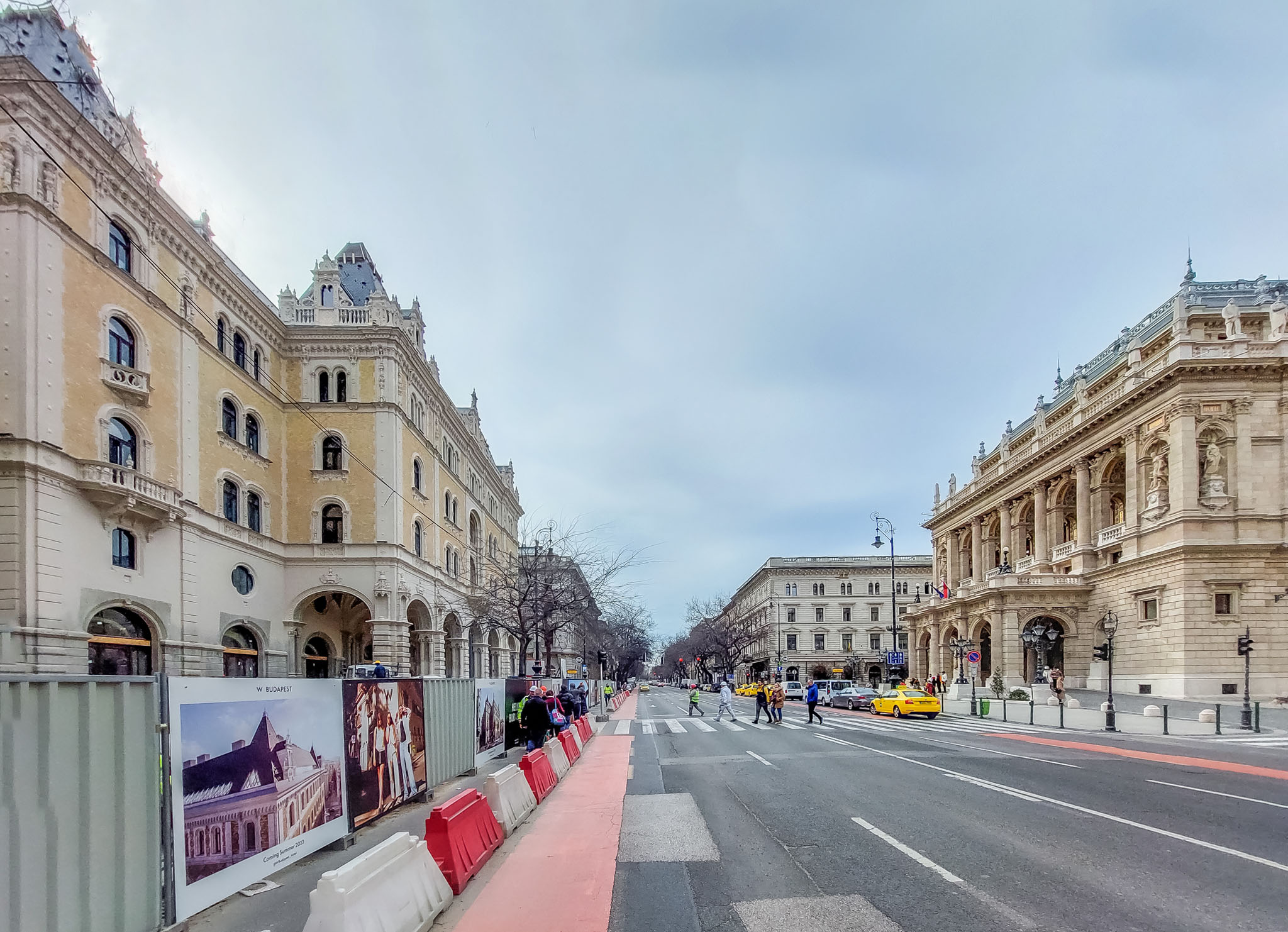
Between 1883 and 1884, MÁV (Hungarian State Railways) built its pension fund residential building opposite the Opera House according to the plans of Ödön Lechner and Gyula Pártos (Photo: Balázs Both/pestbuda.hu)
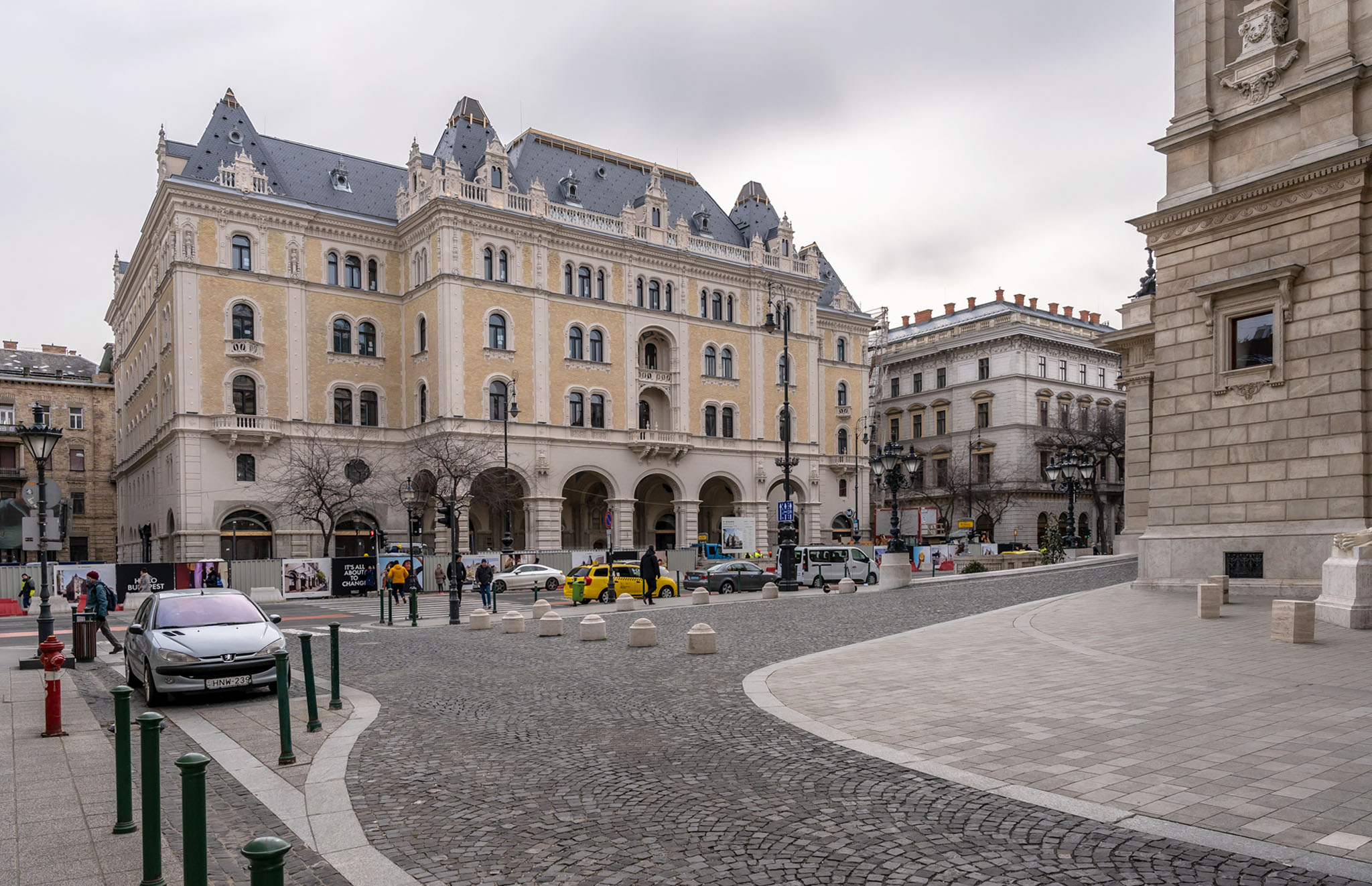
Its main facade faces Andrássy Avenue, but the residential building's entrances open from Hajós and Dalszínház Streets (Photo: Balázs Both/pestbuda.hu)
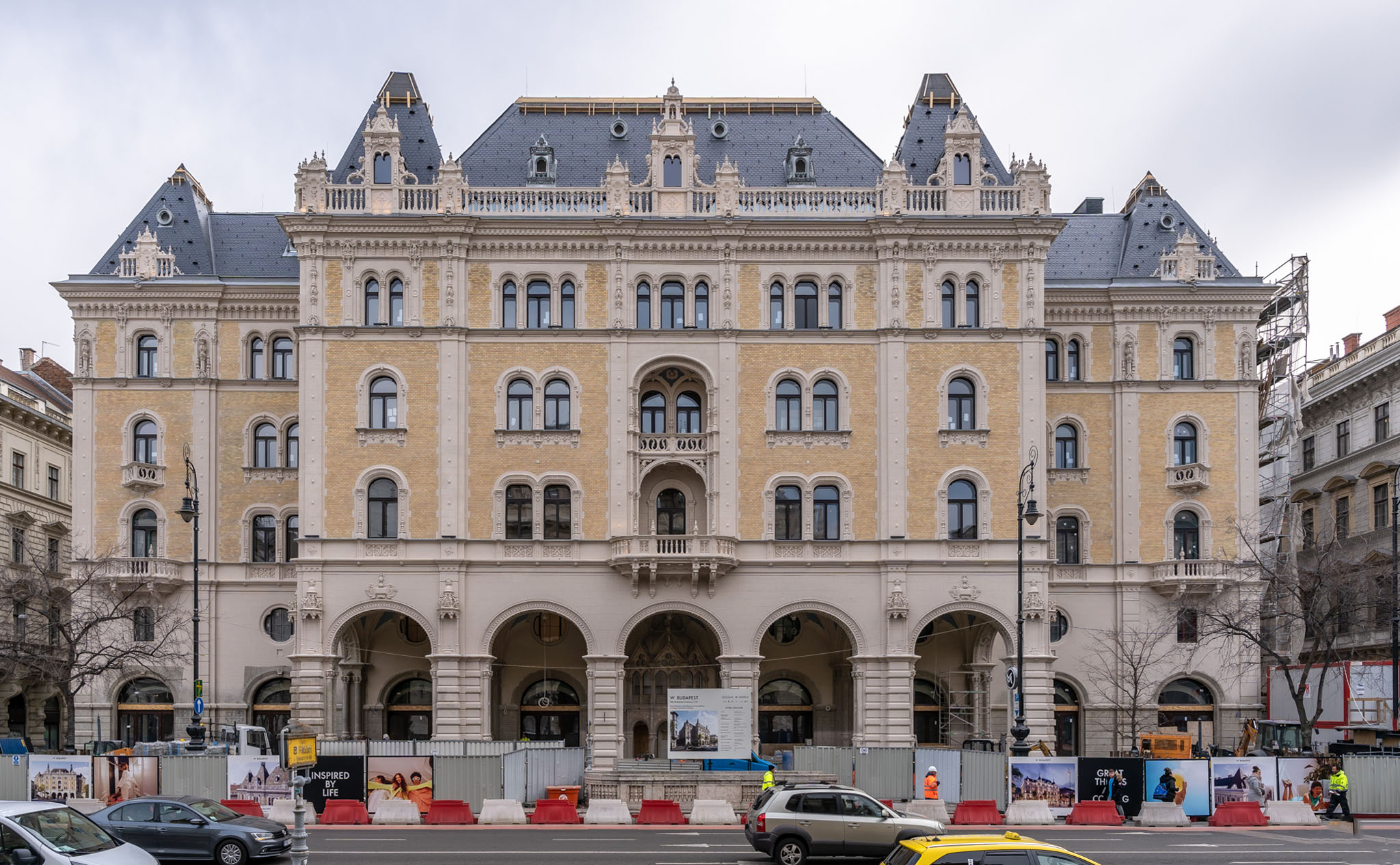
24 rental apartments were created on the upper floors, and the famous Drechsler café was located on the ground floor, where many people from the Opera also visited (Photo: Balázs Both/pestbuda.hu)
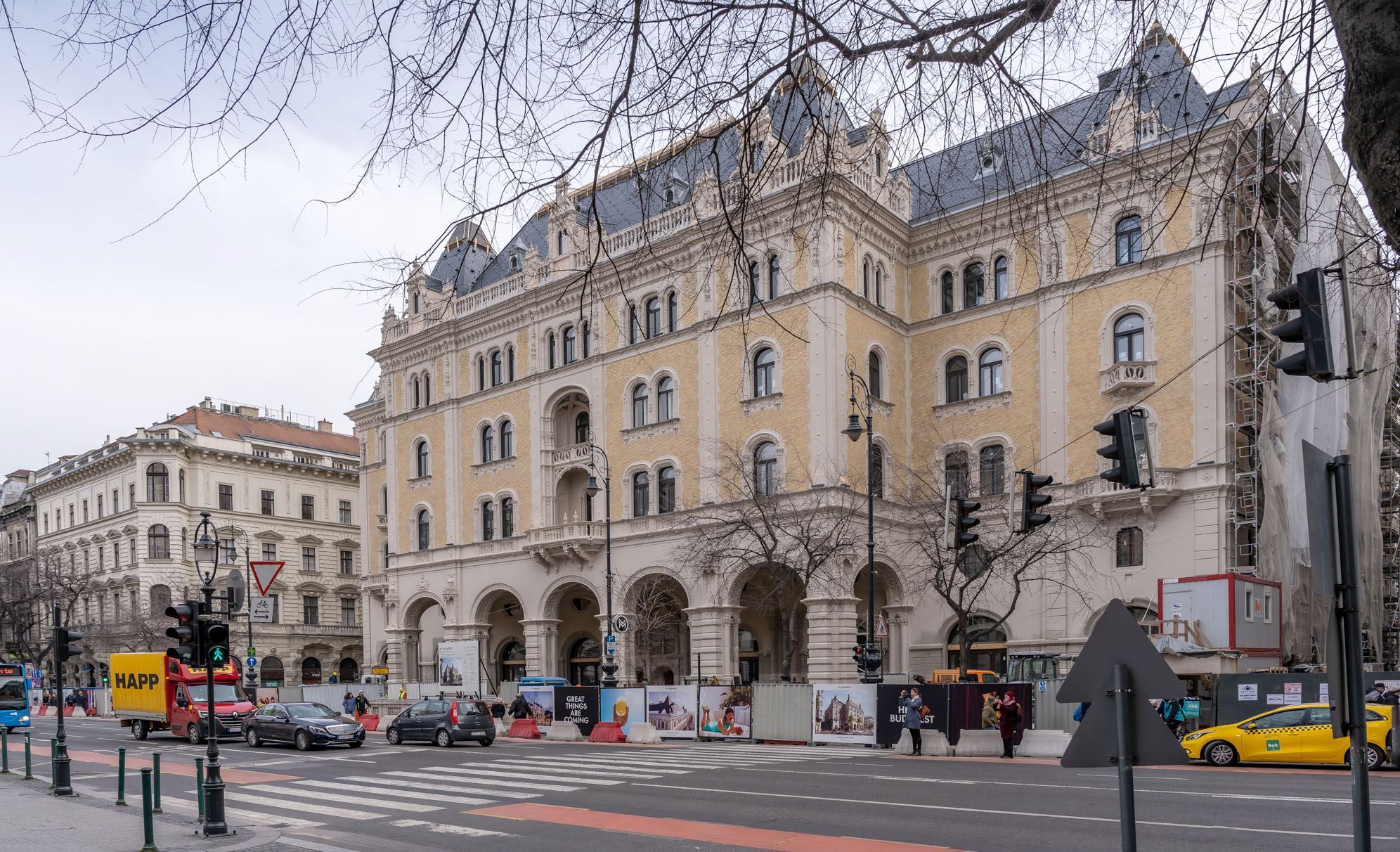
From the centre of the main facade, a wide protrusion, like on the Opera House, jumps forward, which rests on a row of arcades consisting of five openings. The main entrance opens from the corridor behind this (Photo: Balázs Both/pestbuda.hu)
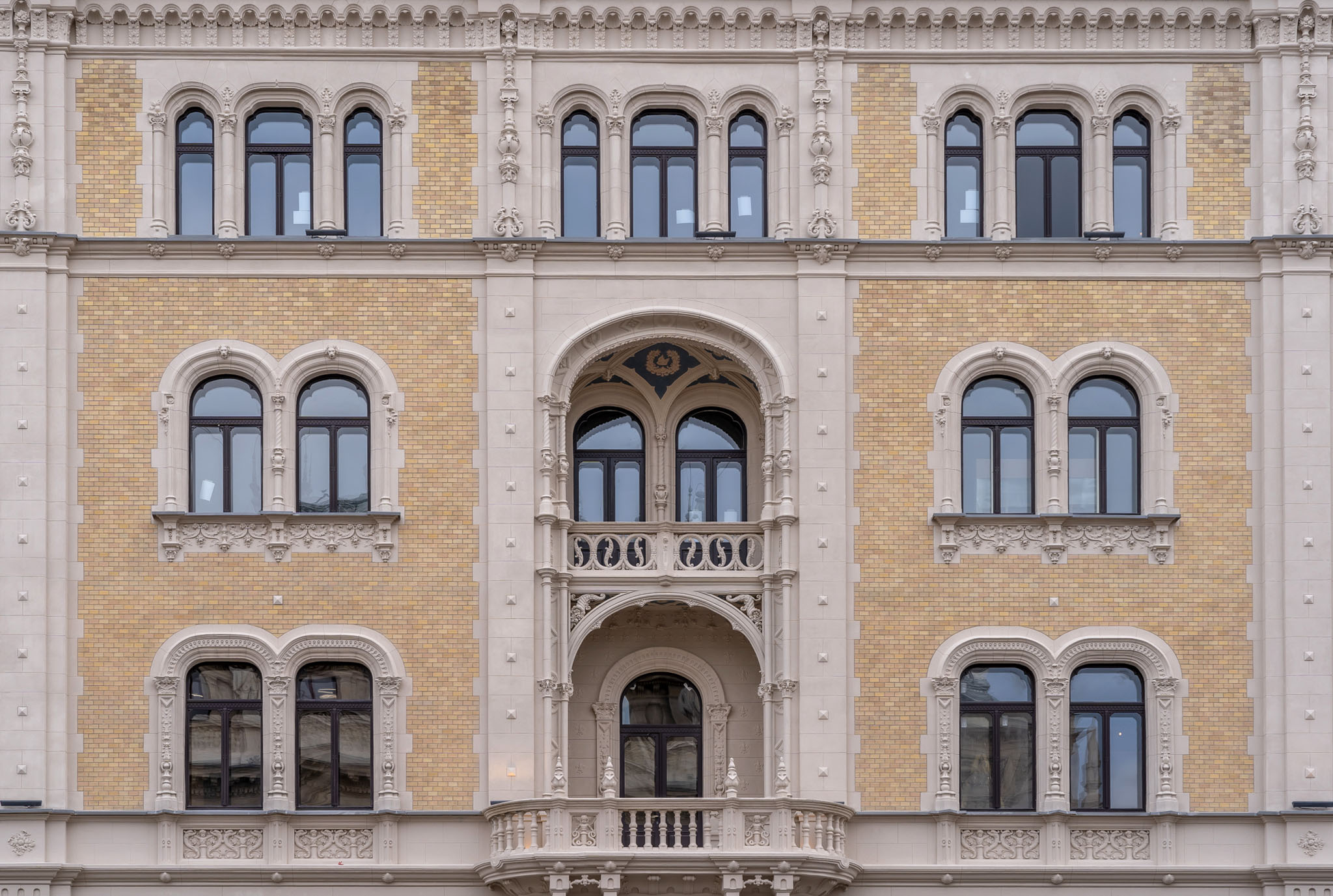
The balcony above the main entrance and the so-called loggia recessed into the wall emphasise the axis of symmetry of the facade (Photo: Balázs Both/pestbuda.hu)
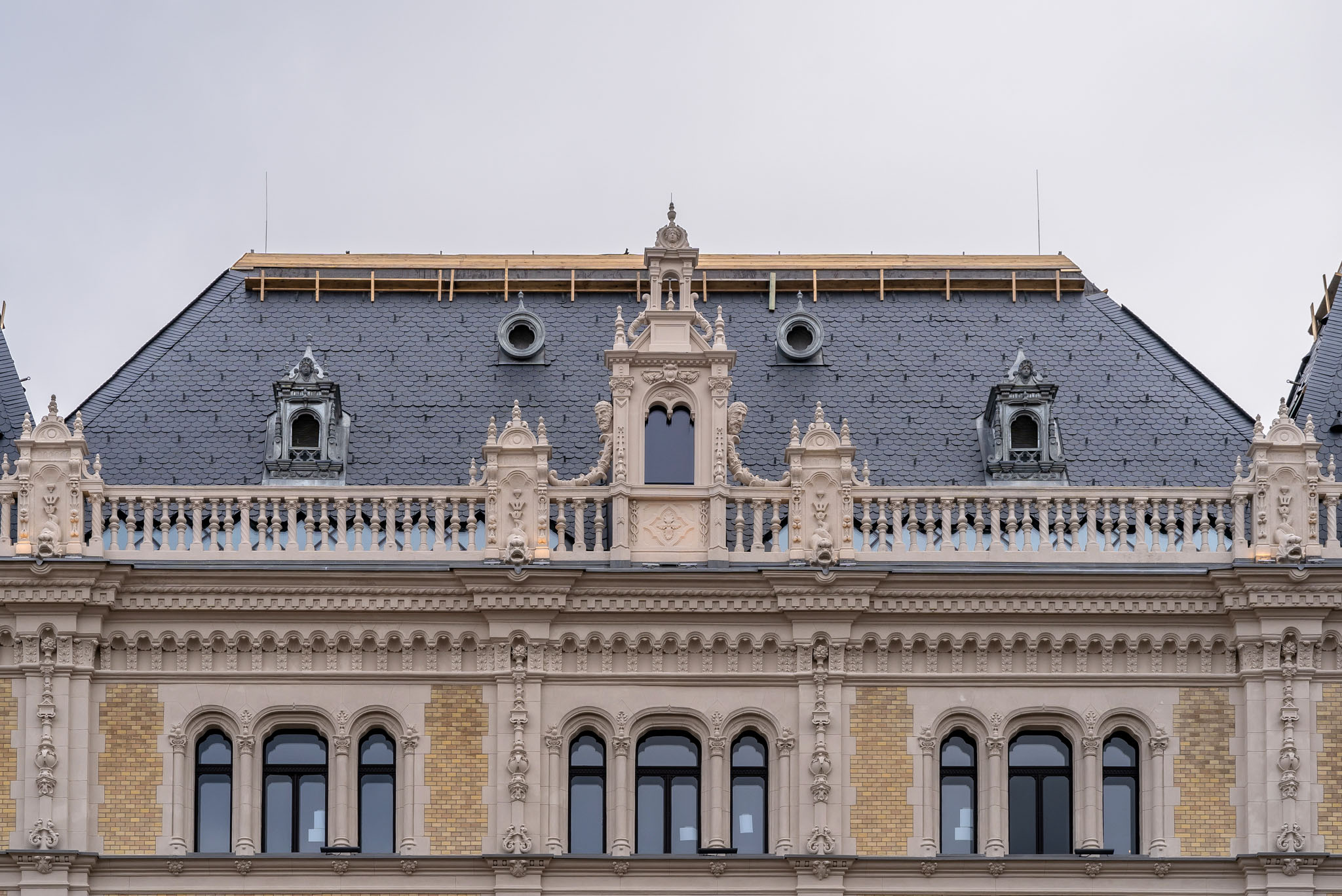
The French Renaissance style of the building is also indicated by the graceful gables, in the decoration of which the individual imagination of the designer also played a role (Photo: Balázs Both/pestbuda.hu)
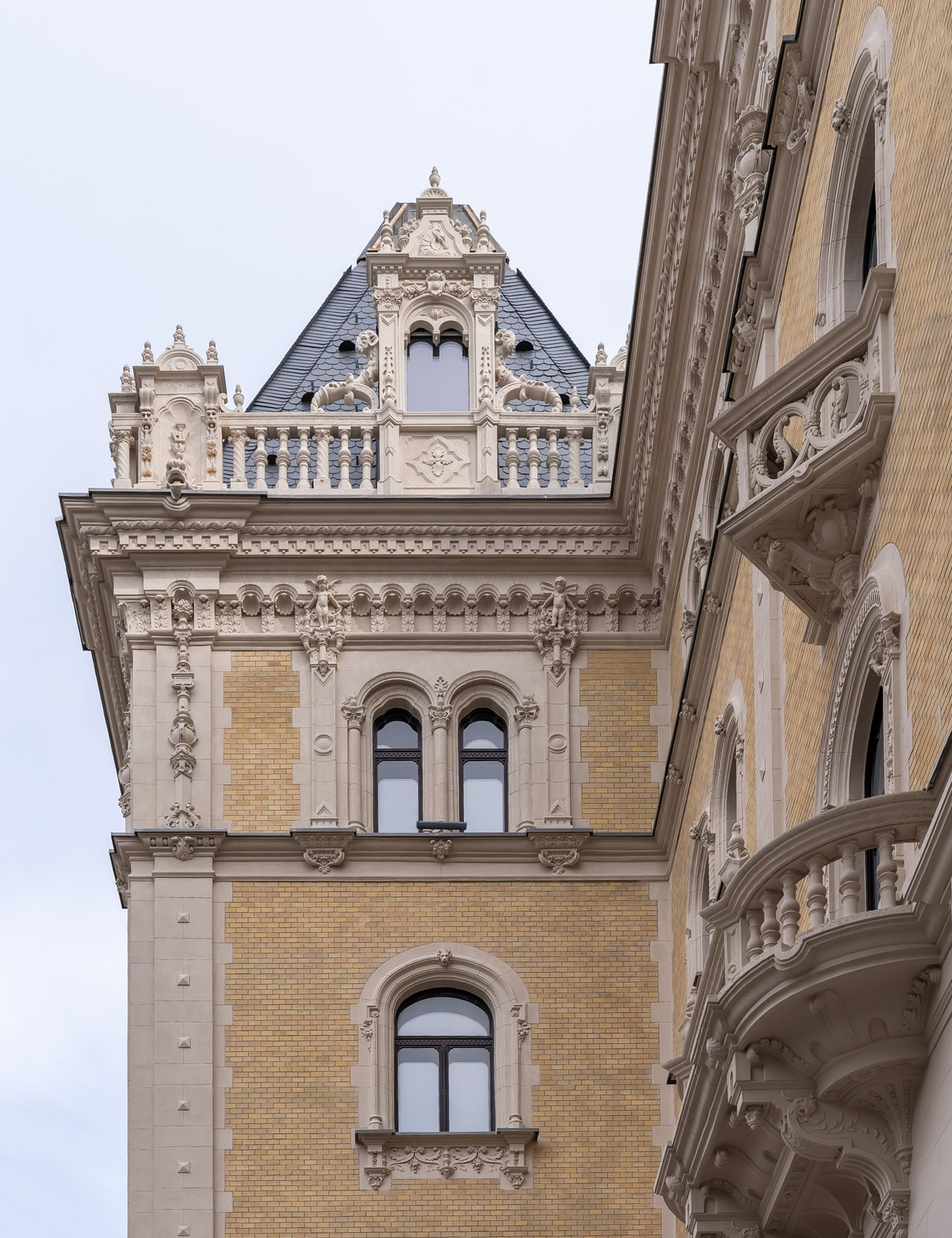
The prominent triangular French balconies and their stone lattice railings are also characteristic (Photo: Balázs Both/pestbuda.hu)
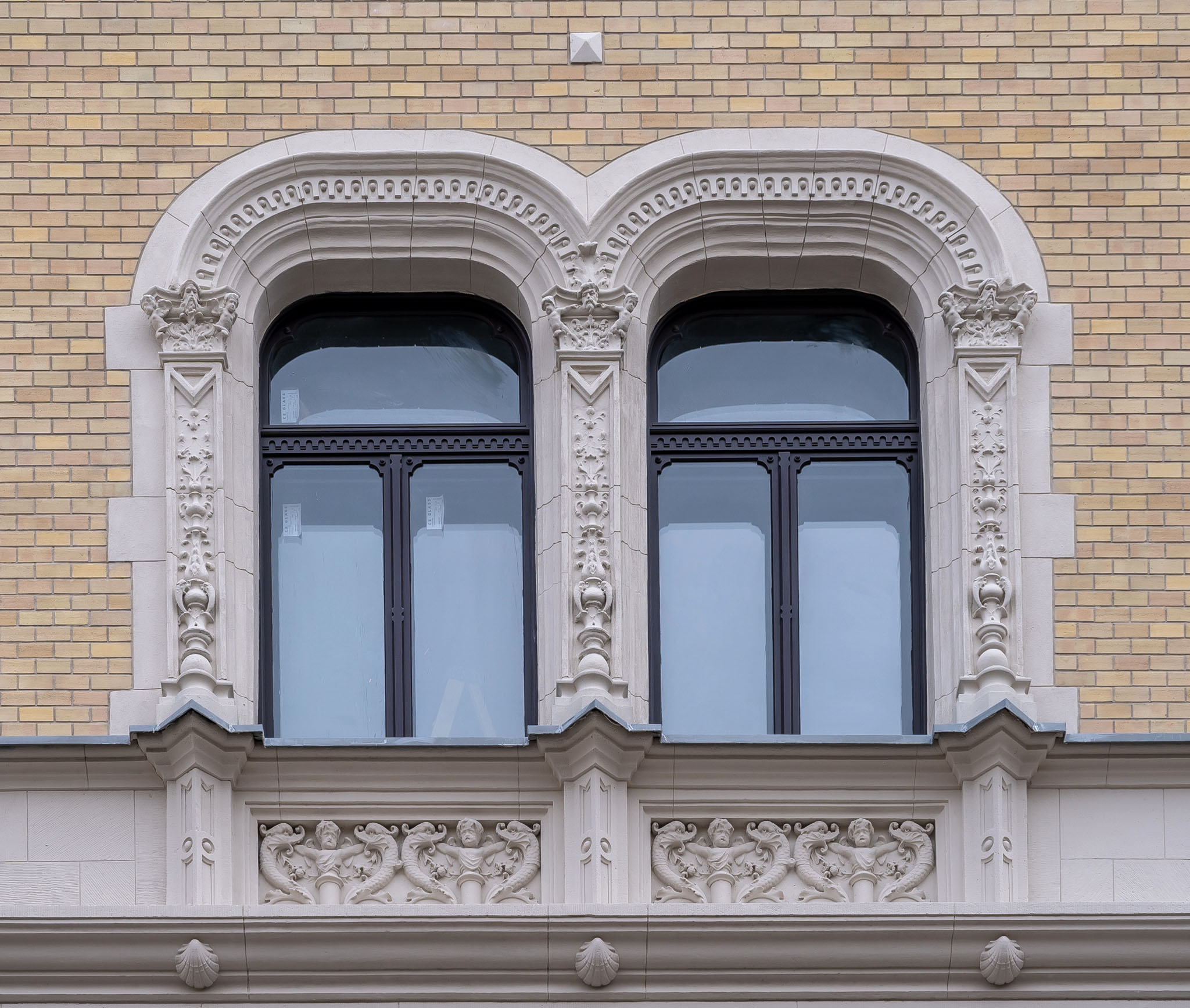
Several figurative elements are hidden in the frames and aprons of the double windows: masks, putto heads, and even water monsters (Photo: Balázs Both/pestbuda.hu)
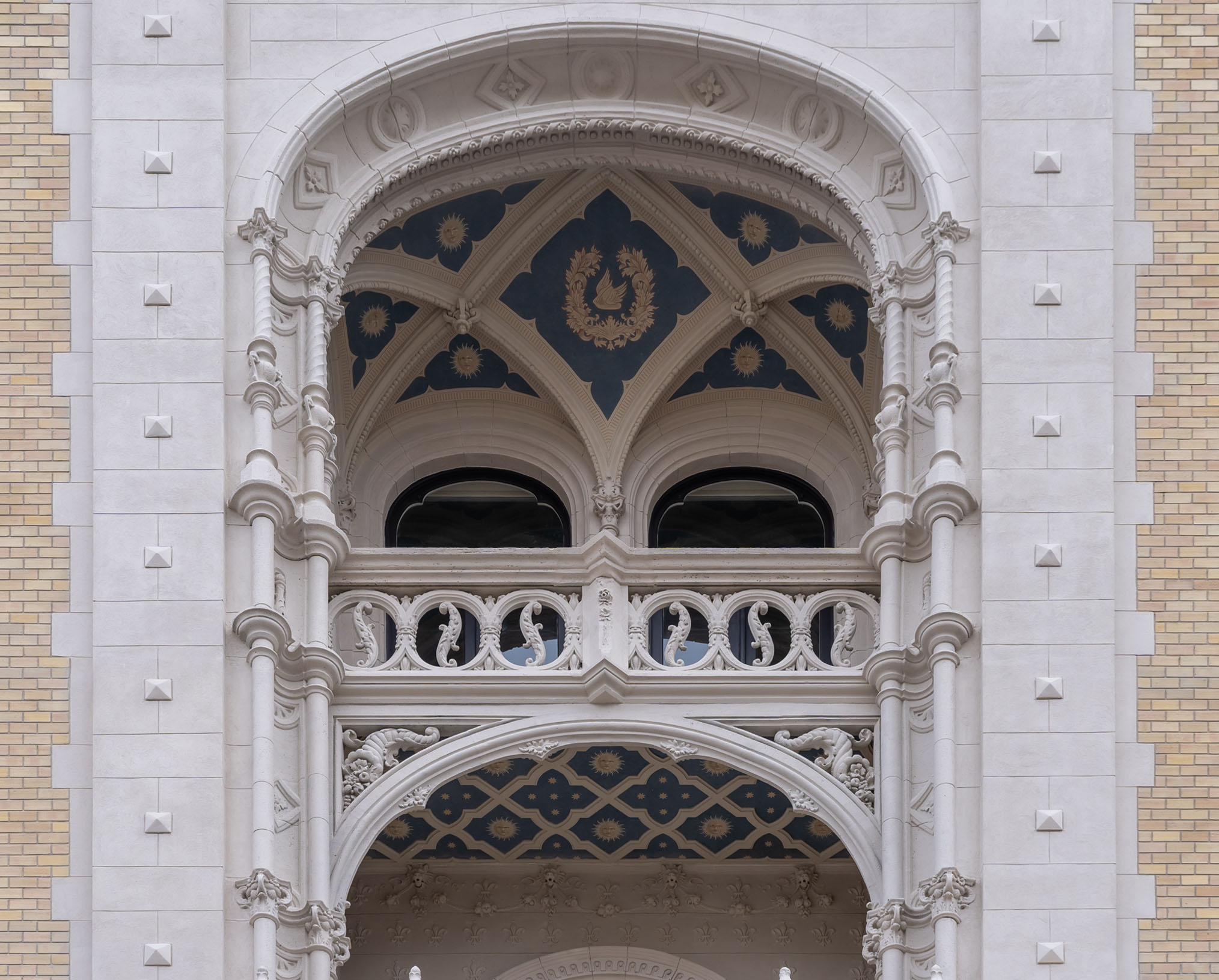
The French Renaissance likes to use Gothic features, such as the ribbed vault above the loggia (Photo: Balázs Both/pestbuda.hu)
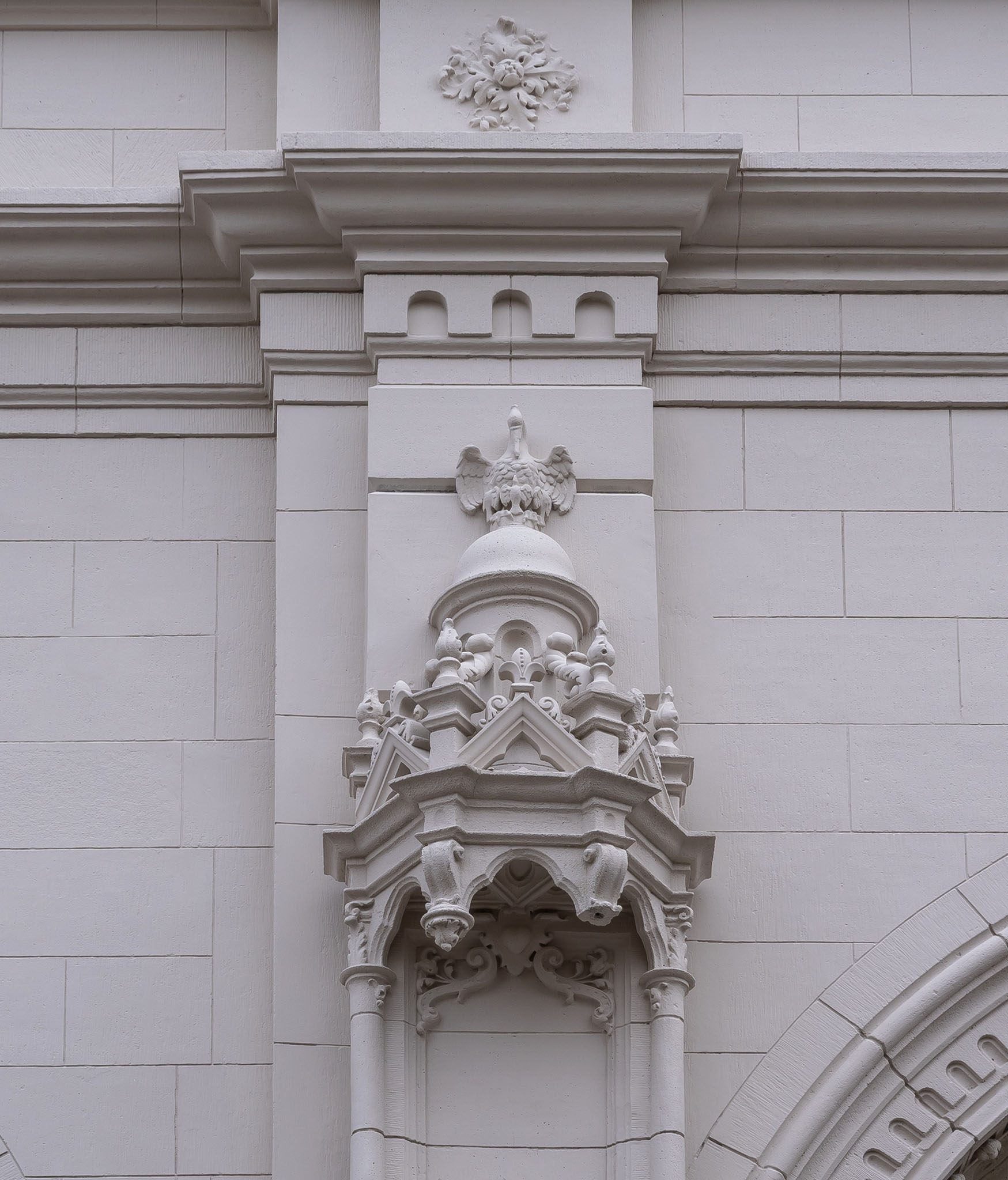
French lilies also appear among the plant decorations of the tent-like structures (canopies). And the pelican standing on top is an allegory of care (Photo: Balázs Both/pestbuda.hu)
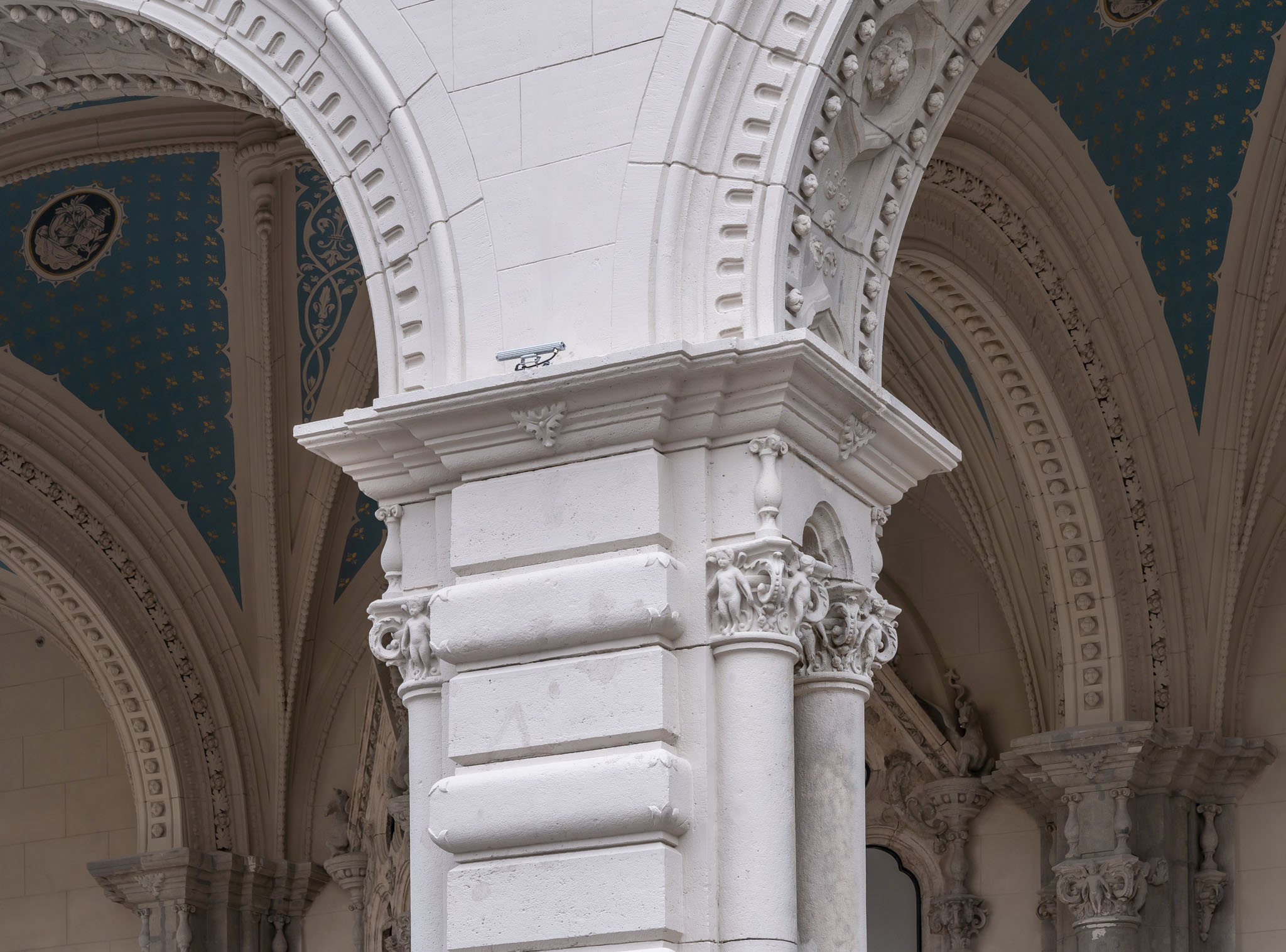
The pillars of the arcade row on the ground floor are covered with (squared) plaster imitating regular stones, but slender columns decorated with putti are also attached to them (Photo: Balázs Both/pestbuda.hu)

The vault of the arcaded corridor was painted a bright blue colour, while the ribs are white and meet in the middle in a so-called hanging guard (Photo: Balázs Both/pestbuda.hu)
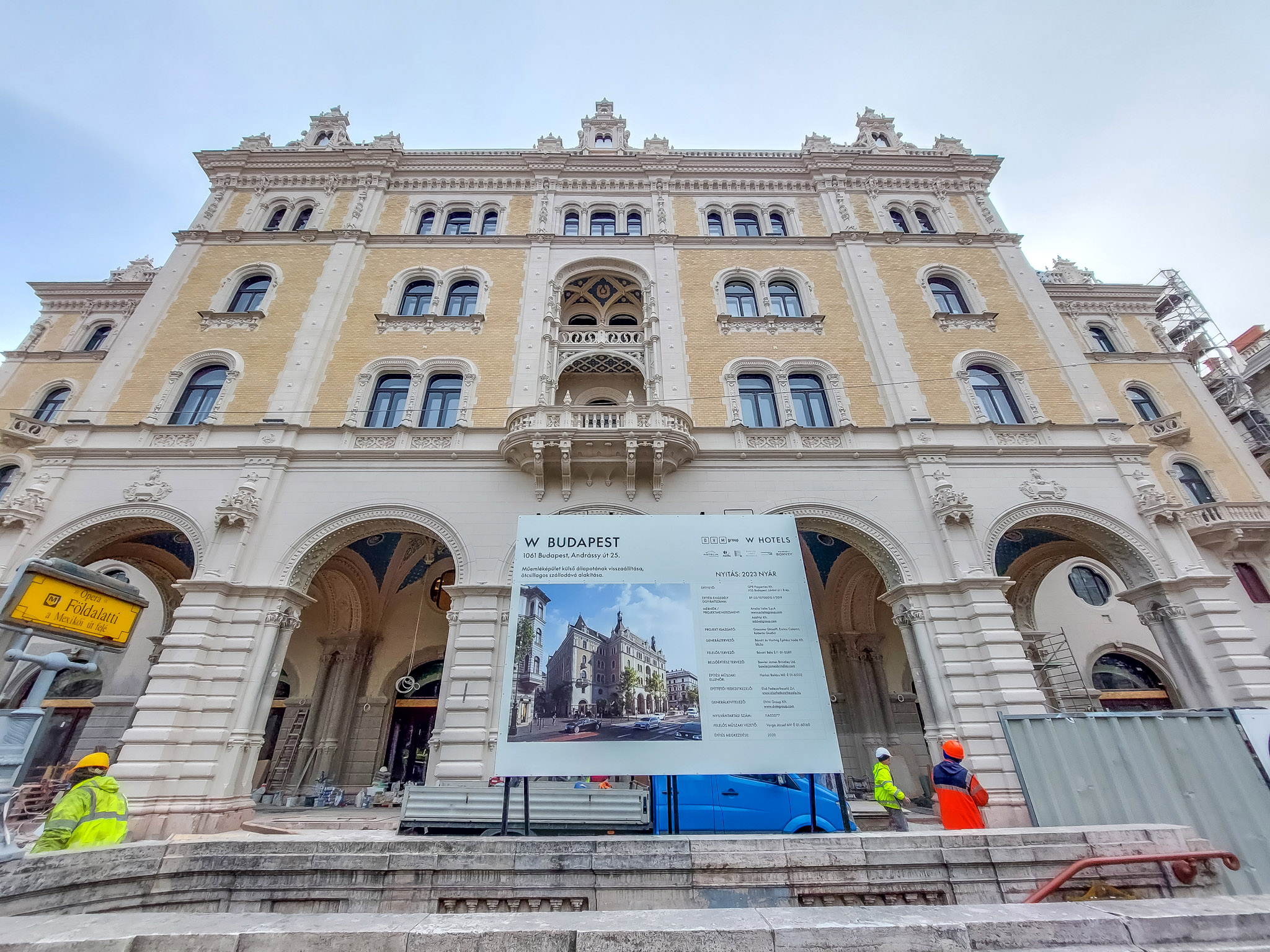
After the renovation, which will be completed by the summer, a luxury hotel named W Budapest will open in the building, but the surrounding sidewalks and road surfaces will also be renewed (Photo: Balázs Both/pestbuda.hu)
Cover photo: The palace at 25 Andrássy Avenue was built for the Pension Fund of the Royal Hungarian State Railways between 1883 and 1884 according to the plans of Ödön Lechner and Gyula Pártos (Photo: Balázs Both/pestbuda.hu)

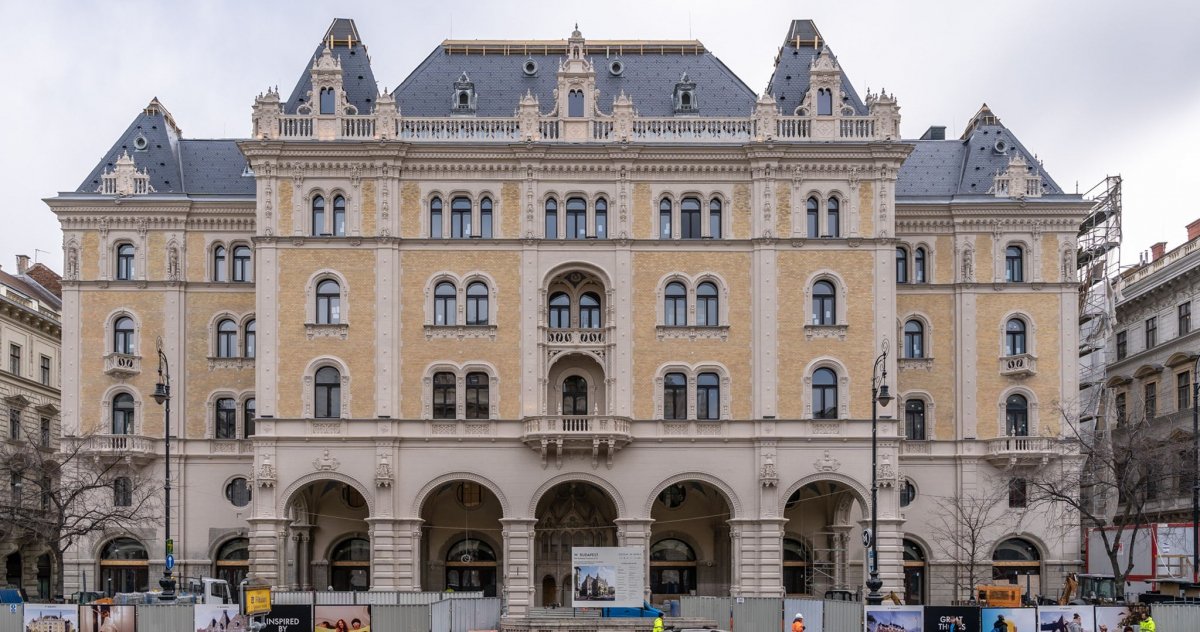






Hozzászólások
Log in or register to comment!
Login Registration